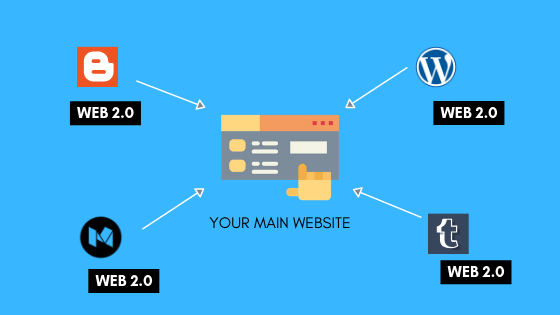In the ever-evolving world of digital marketing and content creation, blogs serve as crucial tools for individuals and businesses to share their insights, showcase their expertise, and connect with their audience. However, even the most brilliant content can fall flat if it doesn’t get indexed properly by search engines. Web 2.0 platforms, which typically allow users to create and share content easily, can sometimes present indexing challenges. This article aims to equip you with the troubleshooting tips and strategies necessary to ensure your Web 2.0 blog gets indexed effectively.
Understanding Web 2.0 and Indexing
What is Web 2.0?
Web 2.0 refers to the second generation of the internet characterized by user-generated content, usability, and interoperability. Platforms like WordPress, Tumblr, Blogger, and others allow users to create their blogs without extensive technical skills. Although the democratization of publishing has been revolutionary, these platforms often face unique indexing challenges.
How Search Engine Indexing Works
Indexing is the process used by search engines to collect, parse, and store data for quick retrieval. When you publish a blog post, it needs to be crawled by search engine bots. If crawlers cannot access it, your content won’t appear in search results, limiting visibility and traffic.
Common Indexing Issues with Web 2.0 Blogs
While many factors can influence blog indexing, here are some frequent issues specific to Web 2.0 platforms:
1. Robots.txt Restrictions
The robots.txt file tells search engine bots which pages to crawl and which to ignore. If this file is incorrectly configured, it could prevent your blog from being indexed.
Solution:
Check your robots.txt file for any "disallow" directives that might be blocking access to your blog. You can do this by appending /robots.txt to your domain. If necessary, modify the file to allow crawling.
2. Inadequate Internal Linking
Search engines rely on internal linking to navigate and discover new content. A lack of internal links can hinder the indexing process.
Solution:
Ensure that your blog has a well-structured internal linking strategy. Link to your most important posts from your homepage or within other articles to facilitate crawling.
3. Poor Site Structure and Navigation
Confusing site structures can make it difficult for search engines to crawl and index content effectively.
Solution:
Create a clear, logical site hierarchy. Use categories and tags appropriately to help search engines and readers understand your site’s layout.
4. Duplicate Content
Web 2.0 sites, especially those with user-generated content, are prone to duplicate content issues. Search engines may penalize sites for this, leading to poor indexing.
Solution:
Use canonical tags to indicate the preferred version of your content. Additionally, focus on creating unique, original articles that provide value.
5. Slow Page Load Speed
Page load speed is a critical factor for both user experience and search engine indexing. Slow pages can lead to higher bounce rates, affecting your visibility.
Solution:
Optimize images, leverage browser caching, and consider using a content delivery network (CDN) to improve loading speed. Tools like Google PageSpeed Insights can help analyze your site’s performance.
6. Noindex Tags
The noindex tag is used to instruct search engines not to index a specific page. If your content contains this tag, it won’t show up in search results.
Solution:
Double-check your blog’s settings to ensure that noindex tags are not inadvertently set on pages you want indexed.
7. External Links
While internal links are essential, external backlinks are also crucial for establishing credibility. If your blog lacks backlinks, it may struggle with indexing as search engines view it as less authoritative.
Solution:
Engage in link-building activities by guest posting, collaborating with other bloggers, and promoting your content on social media to increase your site’s authority.
Final Tips for Ensuring Proper Indexing
-
Submit an XML Sitemap: Make sure you submit your XML sitemap to search engines like Google Search Console. This helps crawlers understand your site’s structure and discover new content faster.
-
Use Social Media: Promoting your content on social media channels can drive traffic and encourage search engines to index your pages more quickly.
-
Monitor Indexing Status: Regularly check for indexing issues using tools like Google Search Console. Monitor your site’s performance and address any notifications from search engines promptly.
- Stay Updated: Keeping abreast of changes to search engine algorithms and blog platform updates will help you adapt your strategies as needed.
Conclusion
Troubleshooting indexing issues on your Web 2.0 blog may seem daunting, but with the right approach, you can significantly enhance your blog’s visibility. By addressing common problems systematically and adhering to best practices, you can ensure that your valuable content reaches the intended audience. Remember, effective indexing is not just about search engines; it’s about connecting with readers who seek the insights you offer.
Troubleshooting Issues with Web 2.0 Blog Indexing
Troubleshooting Issues with Web 2.0 Blog Indexing
- Weight Loss Supplements
- https://www.youtube.com/@
WeightLossSupplementsHQ - Health & Wellness
- https://www.youtube.com/@
Health-WellnessHQ - Weight Loss Diets
- https://www.youtube.com/@
WeightLossDietsHQ - Weight Loss Drinks
- https://www.youtube.com/@
WeightLossDrinksHQ - Nagano Tonic Reviews
- https://www.youtube.com/@
NaganoTonicReviewsHQ - Sumatra Slim Belly Tonic Reviews
- https://www.youtube.com/@
SumatraSlimBellyTonicReviewsHQ - Honest Product Reviews
- https://www.youtube.com/@
HonestProductReviewsHQ - Weight Loss & Fitness
- https://www.youtube.com/@
WeightLossFitnessHQ - Dietary Supplements
- https://www.youtube.com/@
DietarySupplementsHQ - Supplements for Weight Loss
- https://www.youtube.com/@
SupplementsforWeightLossHQ - Fat Burner
- https://www.youtube.com/@
FatBurnerHQ
